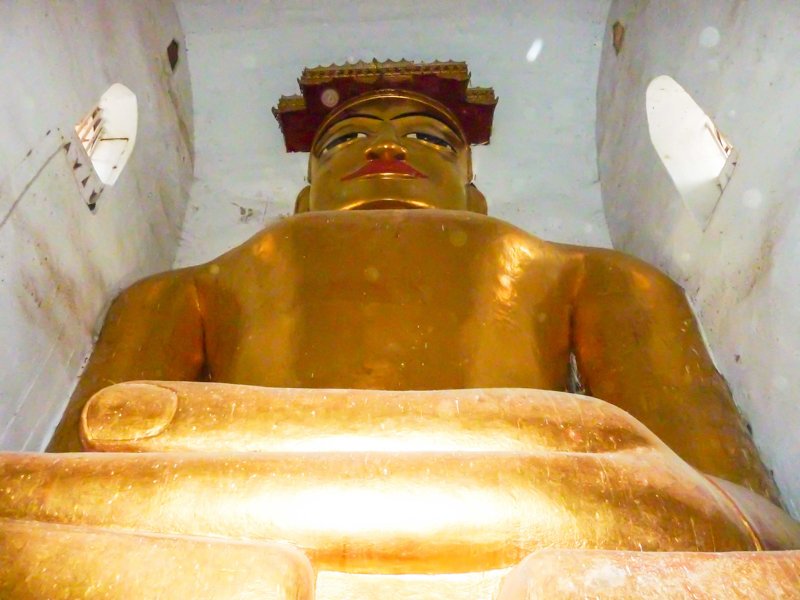Location: Myinkaba Village, southern edge. Close to Nanpaya.
Year Built: Manuha was built by the “captive” Mon king Manuha. In Mandalay there is a stone inscription described King Manuha, who owned 32 white elephants, built the guphaya with three colossal seated Buddha images, 14m high and a recumbent Buddha image, 17.6 meters long, completed in six months and six days. King Manuha was captured and confined to Pagan when he built this temple. On the other hand, Stadtner says that there is no proof that this is an early Pagan temple. It may have been built in the 16th or 17th centuries (Konbaung period or earlier).
Builder: Manuha was captured by Anawrahta and built this temple as “penance” after Anawrahta “eliminated his dharmic powers.” – Strachen, Pagan, p. 46.
Architectural details: There is a long extension or facade facing the main road. There are 3 chambers with enormous brick Buddhas covered with stucco and painted gold. There was an extension added later containing a reclining Buddha. This is another indication that this was built later than the 11th century because reclining Buddhas are more recent than ancient Pagan. There is a nat shrine for a nat known as Thuraberi, the Hindu god and consort of Brhama. She holds a a stack of books, symbolizing wisdom and learning.
Construction: Built with brick masonry, barrel vault over eastern shrines, barrel vault hipped at both ends over western shrine, barrel vault over vestibules and porches. (Pichard, Inventory of Monuments vol. 6).
Renovations: Manuha sustained heavy damage in the 1975 earthquake. It was rebuilt in reinforced concrete between 1975-80.
References:
Ancient Pagan: Buddhist Plain of Merit, Donald Stadtner, River Books, 2013
Pagan: Art and Architecture of Old Burma, Paul Strachan, Kiscadale Publications, 1989
Guide to Bagan Monuments by Min Bu Aung Kyaing, U Zaw Min Aye (Zaw Press), 2007
Inventory Of Monuments In Bagan, Pierre Pichard, UNESCO, 8 volumes, 1992-2001
